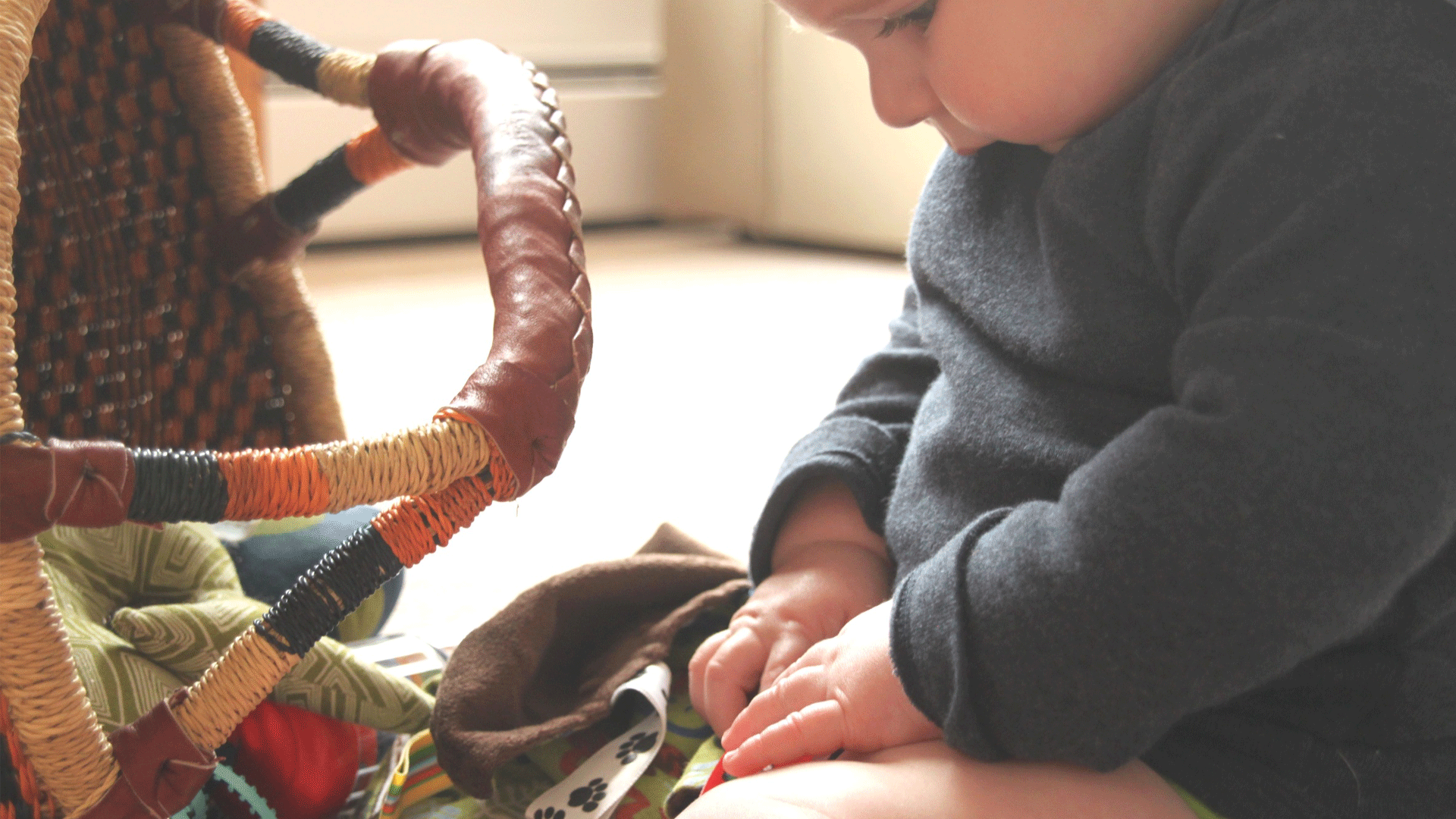
12 Jun How to Make a Treasure Basket
A montessori Kindy teacher shows us how to make a DIY treasure basket to inspire curiosity and exploration in children.
Heuristic play describes the activity of children as they explore the properties of objects they find in their environment. The term comes from the Greek word ‘heurisko’ for ‘find’ (from which we also get ‘eureka’). It’s not a new discovery, but a new name for something we’ve been witnessing in our children for centuries. When they play they make many little discoveries, or ‘eureka moments’, about the world around them.
A convenient home version of heuristic play for children is the treasure basket, which consists of a low-sided container filled with about 50 objects from the natural and home environments. Objects should be made from any material except plastic.
Make Your Own Treasure Basket
Find a basket or container that is texturally interesting. It must have a broad base and straight sides so it doesn’t topple over if leaned on. The child needs to be able to reach inside and touch the bottom while seated beside it. About 30-50cm wide and 10-15cm high is fine.
All objects for the basket should be carefully selected with safety in mind first, then for their sensory appeal. Start by looking through the bottom drawer in the kitchen. As a general rule, if it fits in an ‘old school’ film canister, it’s too small. Then choose items sourced from the natural and home environments, handmade items, recycled materials and items found on walks.
How To Use Your Basket
There is no right or wrong way to use the treasure basket. Children should be free to explore at their own pace and make their own discoveries without adult ‘interference’. Adults should be attentive and responsive, but remain ‘hands off’.
Treasure baskets shouldn’t be left out permanently, as children will soon become bored with the objects. Ideally, each play session should last about an hour. Add to and rotate the items in the basket to keep it interesting and surprising.
Allocate treasure-basket time for when your child is fed, well-rested and calm. The environment should also be peaceful – remove any distractions and ensure there is minimum disruption from television or older siblings.
Ideas For Your Treasure Basket
Wood: large cotton reels, mixing spoons, bowls, dolly pegs, egg cups, napkin rings, fingernail, pastry or paint brushes, driftwood, dowel and large curtain rings.
Textiles: scarves, ribbons, lace items, old handkerchiefs and napkins, hand-knitted items, fabric remnants, leather (not PVC) purses, key holders or straps.
Natural world: pine cones, twigs and small branches, large gumnuts, coconut shells (no other nuts), sea shells, stones, fleece, large feathers, pumice, loofah.
Metal: tea strainers, whisks, spoons, bowls and cookie cutters. Stainless-steel keys, large bolts, chains, bells, jar lids (lots of them for stacking up).
Rubber: balls, bath plugs, soap holders, coasters.
You could add a fresh item that will need to be removed after one session, such as a piece of citrus fruit, a salt shaker with crushed herbs inside, a dried flower or piece of bark.
Amanda Gillard is a Montessori kindergarten teacher based in Perth.
Words by Amanda Gillard

